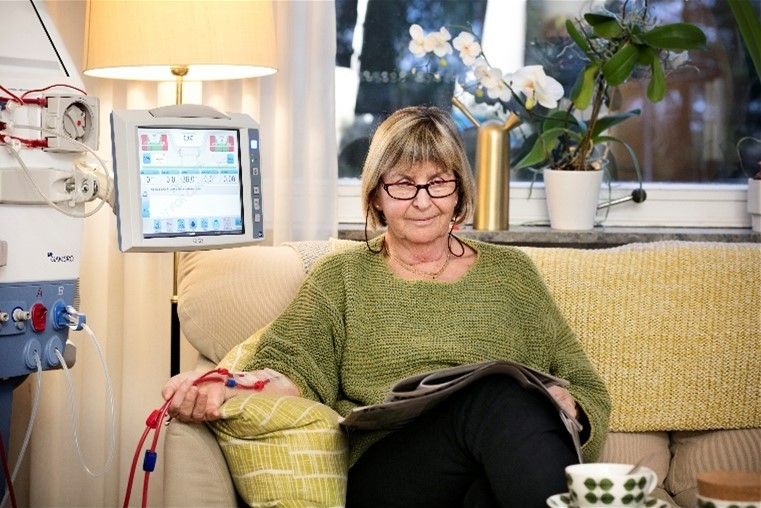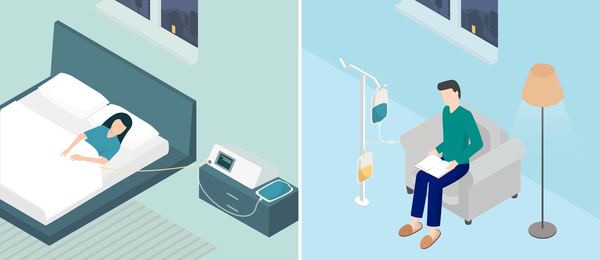Home haemodialysis
Home haemodialysis (home HD) is a therapy option that filters your blood outside your body using a dialysis machine and a manufactured membrane, called a dialyser. Here you can learn more about doing home haemodialysis.
What is home haemodialysis?
Haemodialysis is a type of dialysis that filters your blood outside your body using a machine and a dialyser, which is a manufactured filter that acts like an artificial kidney.

How do I perform home HD?
If home HD is the right treatment option for you, your healthcare team will train you to set up your dialysis machine and other equipment, insert needles properly, and how to perform your treatments successfully.

Home haemodialysis can give you more freedom
Compared to having dialysis in a clinic or hospital, home haemodialysis gives you more flexibility to plan treatments around the activities you know and love. You may even be able to travel while on home HD. You should speak with your clinician before planning activities and trips, as they can give you more information on how to stay safe and healthy while pursuing a full and active life.

Preparing your body for home HD
Before treatments start, you will need to have a surgical procedure that creates a dialysis access site that lets unfiltered blood flow from your body and clean blood back into your blood.
There are three different types of HD access: fistula, graft and HD catheter. Each has its own benefits and drawbacks, and you should discuss these with your healthcare team in order to determine which will be the safest and most effective access option for you. Typically, a fistula is considered the standard of care in most dialysis centres.

Preparing your home for home HD
To perform safe and effective home haemodialysis, you will need to have a dedicated clean area where you can conduct your treatments. You will also need a chair or bed that is comfortable for you to sit or lie in during treatment and a telephone with which you can make any necessary calls to your healthcare team. Your clean area will need to be adapted for dialysis with the type of electrical outlet needed for your dialysis machine, a water source that can be accessed easily during treatment, and a plumbing system for draining away any waste water. These adjustments will be organised and largely paid for by your clinic or hospital.
A member of your healthcare team will usually visit you at home and help you decide on the best place to set up your treatment area and store your supplies.

Benefits of home haemodialysis
Home haemodialysis may be the right treatment option for you if it is well-suited to your medical and physical condition, and lifestyle choices. Home HD gives you the opportunity to enjoy the comfort and freedom that comes with performing dialysis in a space that feels familiar and safe, while having telephone access to professional help if you need it. Doing your treatments at home may also increase your flexibility by allowing you to avoid frequent trips to the hospital or clinic.
Where to go next?

Peritoneal dialysis (PD) at home
Peritoneal dialysis (PD) is the other type of dialysis which can be done at home. We explain more on PD.

In-centre haemodialysis (In-centre HD)
You may prefer to receive dialysis at a hospital or treatment centre near you with ICHD.

Conservative care
If you and your clinician decide dialysis isn’t right for you, there are other treatment options you may consider.
